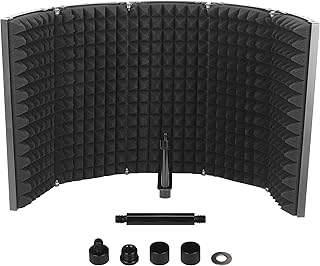In the latter half of the 20th century, Australian artists embraced the advent of recording studios as a crucial creative tool. Before the 1950s, music was predominantly recorded in broadcast studios or concert halls. However, the rise of rock ‘n roll led to a surge in local acts seeking to record their tracks for wider audiences, prompting the establishment of contemporary studios across the country.
These state-of-the-art facilities became the birthplace of some of Australia’s most iconic recordings, leaving a lasting legacy comparable to esteemed musical institutions. Let’s delve into the stories of the most influential Australian recording studios of the 20th century, exploring the people behind them and the groundbreaking music created within their walls.
Armstrong’s Studios in Melbourne played a pivotal role in shaping Australian pop music. Founded in 1965 by Bill Armstrong, the studio saw the recording of acclaimed tracks like The Easybeats’ ‘She’s So Fine’. Over the years, Armstrong’s Studios expanded to a five-studio complex, attracting renowned artists such as John Farnham, Nick Cave, and Kylie Minogue before closing its doors in 2005 amidst the digital recording revolution.
Studios 301 in Sydney stands as one of the longest-running and best-equipped studio complexes in Australia. Originating in 1926 and refurbished in 1978, Studios 301 became a cornerstone of Sydney’s music scene, hosting legendary acts like Midnight Oil, Icehouse, and Grinspoon. Notably, Kanye West chose Studios 301 to perfect his hit track ‘Runaway’ in 2010, emphasizing its global appeal.
Sunshine Studios in Brisbane, established in the late ’70s, fostered the raw energy of punk and alternative music. Hosting seminal recordings by bands like The Saints, Powderfinger, and Regurgitator, Sunshine Studios became a hub for experimental sounds before transitioning into residential apartments, mirroring the fate of many historic studios.
Music Farm Studios near Byron Bay revolutionized Australian recording by offering artists a holistic experience, blending luxury accommodation with cutting-edge recording equipment. Noteworthy albums like Mi-Sex’s ‘Shanghaied’ and Tash Sultana’s ‘Flow State’ were born within its walls, solidifying its reputation as an idyllic creative environment.
Sing Sing Studios in Melbourne earned acclaim as a go-to destination for quality recordings, attracting both local bands and international stars. Notable for producing Nick Cave and Kylie Minogue’s iconic collaboration, Sing Sing Studios underwent multiple relocations before finding a new home in Northcote, embodying the ever-evolving nature of the industry.
Albert Studios in Sydney, synonymous with Australian rock, boasted a rich history intertwined with AC/DC and Vanda and Young’s songwriting prowess. Hosting a plethora of local and international hits, Albert Studios left an indelible mark on the music landscape before making way for urban development in 2016.
Planet Studios in Perth emerged as a powerhouse in Western Australia’s music scene, attracting top talents and boasting state-of-the-art recording gear. Despite a tumultuous dispute among stakeholders that culminated in a devastating fire in 2004, Planet Studios remains a testament to the vibrant musical heritage of the region.
T.C.S Studios in Melbourne, nestled in Richmond, became a rock ‘n roll haven in the ’70s and ’80s. Frequented by iconic bands like Skyhooks and Sherbet, T.C.S Studios, with its talented production team, played a pivotal role in shaping the Australian rock narrative, leaving a lasting impact on the industry.
Lindsay Butler Studios in Tamworth served as a cornerstone of Australian country music, nurturing talents and producing timeless hits. Lindsay Butler’s dedication to the genre earned him accolades, with his studio complex in Tamworth becoming a breeding ground for country legends, underscoring the genre’s enduring influence in Australian music.
Rhinoceros Recording Studios in Sydney, closely associated with INXS, witnessed the creation of numerous ’80s rock classics. However, the studio’s closure in 1993 marked a significant turning point in the industry, reflecting the challenges posed by digital advancements. Despite its demise, Rhinoceros Recording Studios left an indelible mark on Australian music history.
📰 Related Articles
- Riverton Woman’s Vintage Fashion Collection Chronicles 20th Century Trends
- Armstrong Studios: A Legacy of Australian Music Innovation
- Young Street Machine of the Year Celebrates Australian Car Builders
- Young Australian Rider Shines at CHIO Aachen Dressage Competition
- Women in Australian Mining: Breaking Barriers and Driving Diversity






